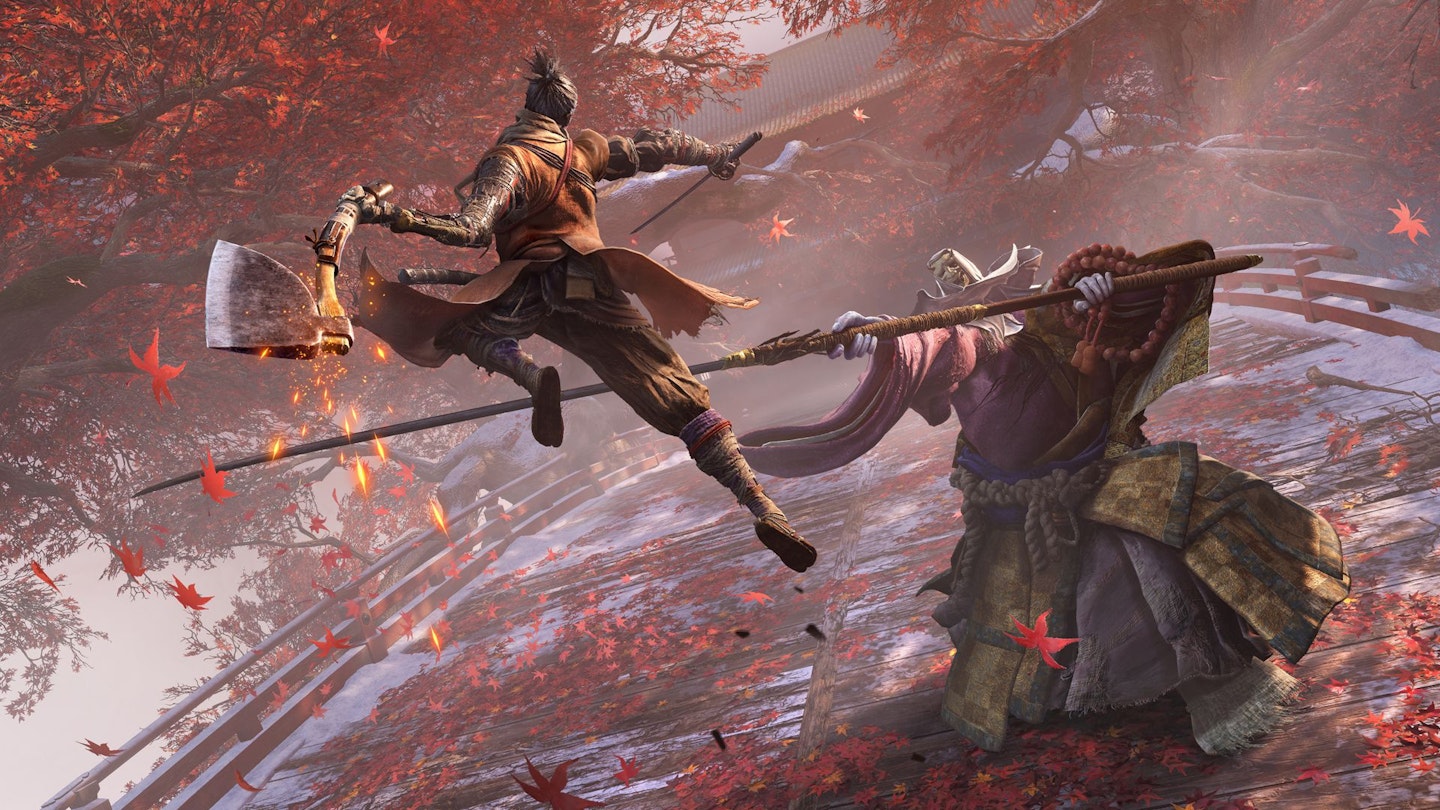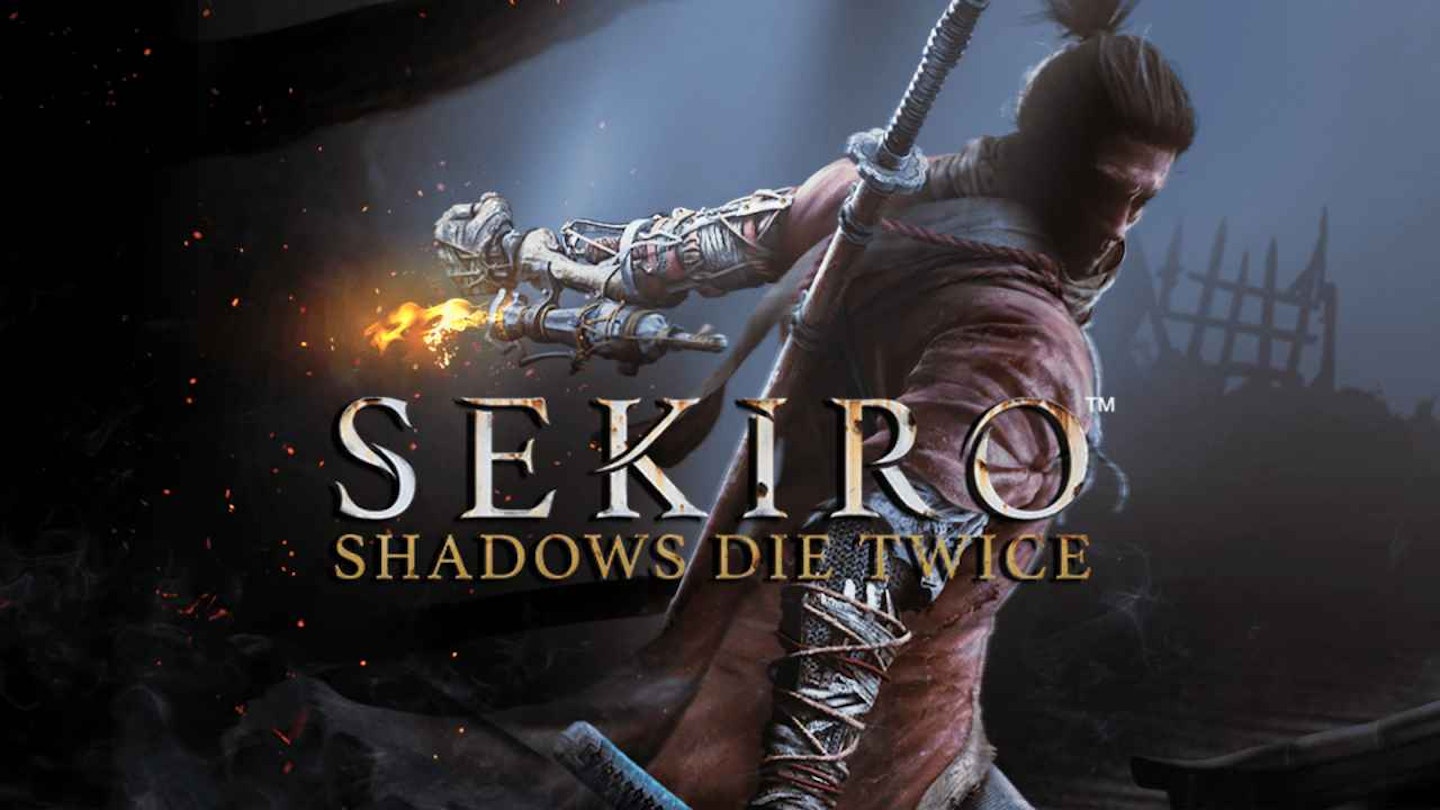Set in the Sengoku period – think samurai and swordfights aplenty – Sekiro sees you guiding the eponymous shinobi around a beautifully rendered take on historical Japan, using expert swordsmanship and a curiously advanced prosthetic arm to dispatch enemies both mortal and other. Coming from developer FromSoftware, you might expect a feudal take on its Dark Souls franchise – and at a glance, you'd be right.

Mechanically, Sekiro is incredibly similar to the gothic action-adventure series, with attacks locked to the controller shoulder buttons, quick items cycled through and used on the d-pad, and a checkpointing and travel system at Buddha statues that's effectively the same as Souls' bonfires. It even has a death and rebirth system that's similar – and like Souls, Sekiro is so tough you'll be using it a lot.
Look closer though, and Sekiro is far more than a genre re-skin. Its combat is more precise for one, with a meticulous approach to swordplay that evokes the precision demanded by Tenchu, Bushido Blade, or Ninja Gaiden. You'll need to read opponents' moves carefully, deflect their blows at the precise moment of impact or knocking enemies off-balance, before unleashing deathblows. Timing is everything, and it's thrilling.
Sekiro is also far more engaging, narratively. Gone is Dark Souls' barely alluded to lore; here's there's a rich and engaging story to follow, with important characters you'll come to care for. There are branching points, with some significant changes in direction based on your choices, but whatever your decisions, there's far more going on to keep your attention.
Sekiro is simultaneously tougher yet more accessible than the Dark Souls series has ever been.
Movement is a delight, too. No matter the character build you went for in Dark Souls, there was always a sort of ponderousness to getting around the world. Here, you'll be able to grapple to high points using your prosthetic arm, adding a verticality that feels fresh and unusual for FromSoftware, but incredibly welcome. The ability to shimmy along narrow footholds, hug walls, hang from ledges, and be generally ninja-like makes the world feel far more explorable too, while being able to eavesdrop on conversations while hidden makes the world feel more realistic – as well as sometimes hinting at important events or locations.
And that death and rebirth system? The hint is in the game's title. Due to some plot shenanigans, you'll have the choice to resurrect immediately where you fall, allowing you to 'die twice' while trying to gain ground against blisteringly tough enemies before suffering a true death and having to restart from a Buddha statue. If you think that sounds like a concession, think again though – Sekiro may be the most difficult game FromSoftware has created yet, and even with double the chances, it still feels like the odds are stacked against you.
But Sekiro's secret is that beyond the Souls similarities, it's a very different game, and will be more rewarding to players who shake off any preconceptions. It's more versatile, allowing you to focus on stealth or confrontation as you choose, while later upgrades and attachments for your arm modify gameplay further from the expected formula.

It's all slightly let down by it being too easy to get lost, and often feels like you've no idea where to go next – and with a world as big as this one, that's a problem. By being far more open than its spiritual predecessors, it's also common to wander into a nigh-impossible boss fight that you're not ready for, just by exploring.
Yet with its deeper story, identifiable characters, and painstakingly precise but deeply rewarding combat, Sekiro is simultaneously tougher yet more accessible than the Souls series has ever been. An instant masterpiece.
